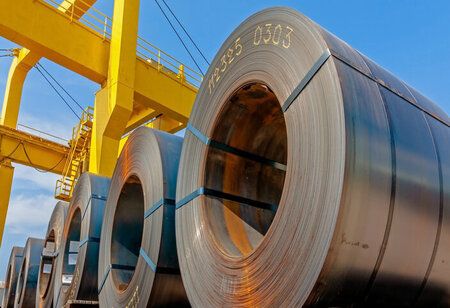
Amid the persistent Red Sea crisis, Indian steel manufacturers fear potential repercussions on exports, exacerbating challenges in the face of reduced demand and heightened global competition. The crisis, which began in November due to attacks by Iran-backed Houthis in Yemen, has substantially reduced daily container vessel traffic in the Red Sea by nearly 60% since mid-December.
Between fiscal years 2020 and 2022, Indian steel exporters accounted for 10-15% of their annual output. However, fiscal year 2023 witnessed a decline to 6.5%, reaching 8.3 million tonnes, following government-imposed export duties, according to Crisil Ratings’ data. Projections for the current fiscal year estimate a further decrease in steel exports to 5-7 million tonnes, influenced by subdued global demand and prices.
The Red Sea crisis has prompted concerns among freight operators, leading to hesitancy in navigating through the affected channel. L&T CFO R Shankar Raman anticipates delays in order execution, and if the crisis persists, alternative routes may need to be explored.
JSW Steel Joint MD & CEO Jayant Acharya notes concerns on container vessels plying the route but observes minimal impact on the breakbulk side. The company is considering a shift towards break bulks for exports, adapting its strategies in response to the evolving situation.
While the Red Sea crisis is expected to escalate freight costs and pose challenges in container availability, the impact on the earnings and credit profiles of steelmakers is projected to be limited. Healthy domestic steel demand and prices, coupled with the ability to pass on a significant portion of the freight cost increase, contribute to this resilience. Crisil Ratings director Ankit Hakhu emphasizes the buoyant domestic demand, expected to grow at 11-13% this fiscal, as a mitigating factor against potential export setbacks.
In response to disruptions, Jindal Stainless has revised its export forecast for the fiscal year, citing freight disruptions in the Red Sea and weakened demand in Europe and the US.

